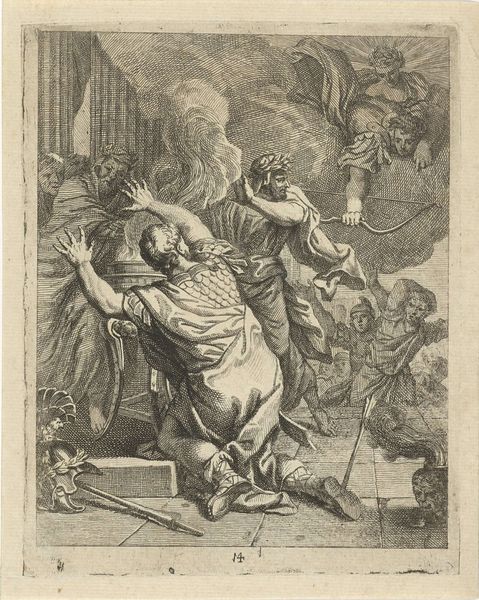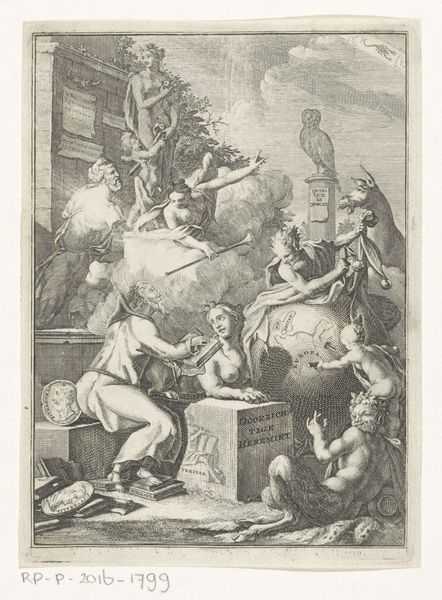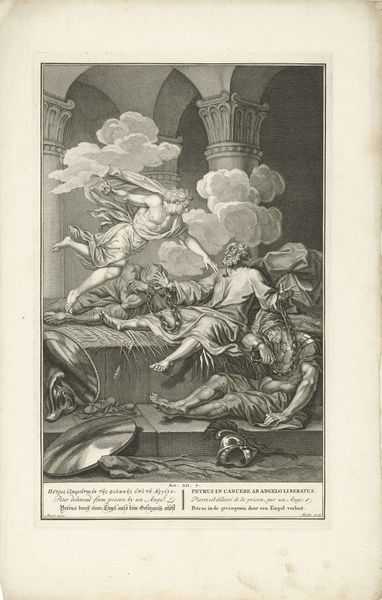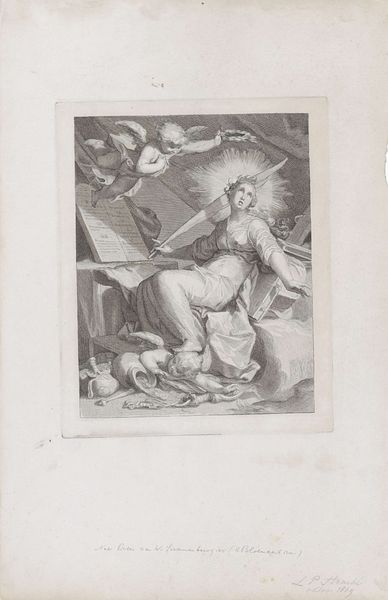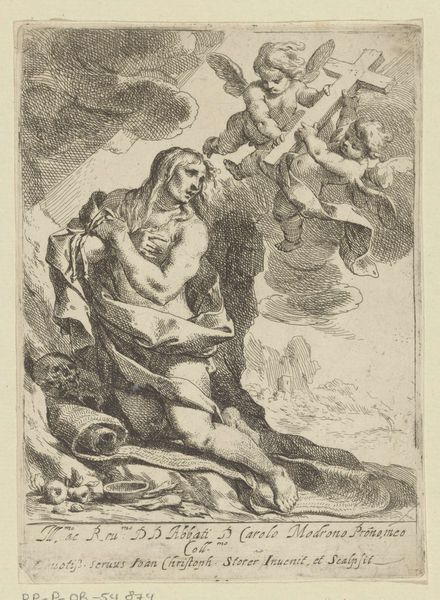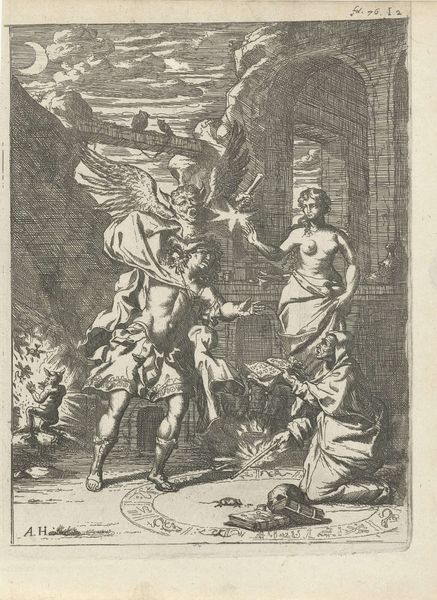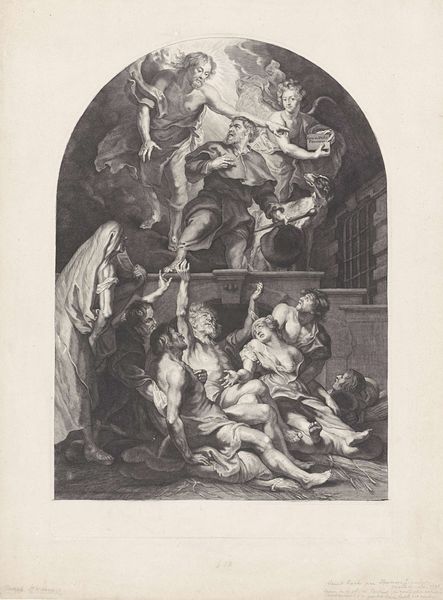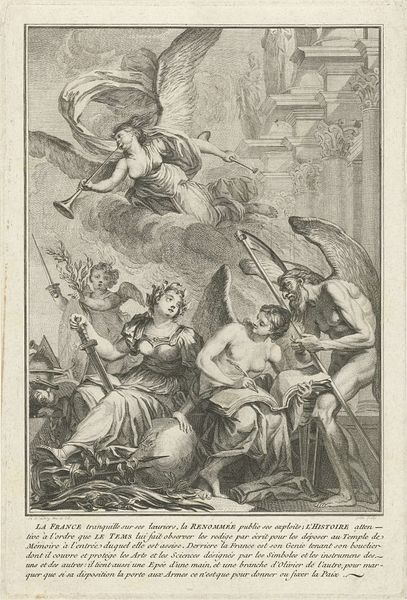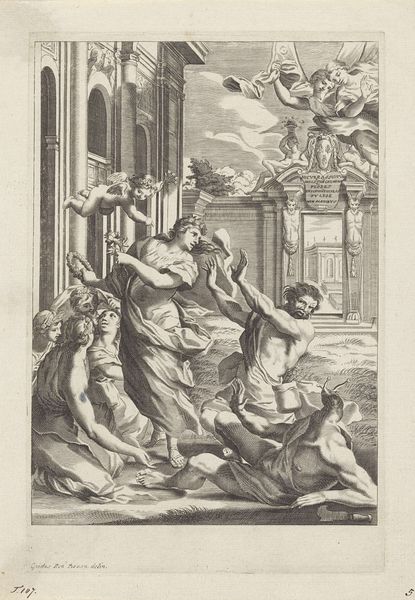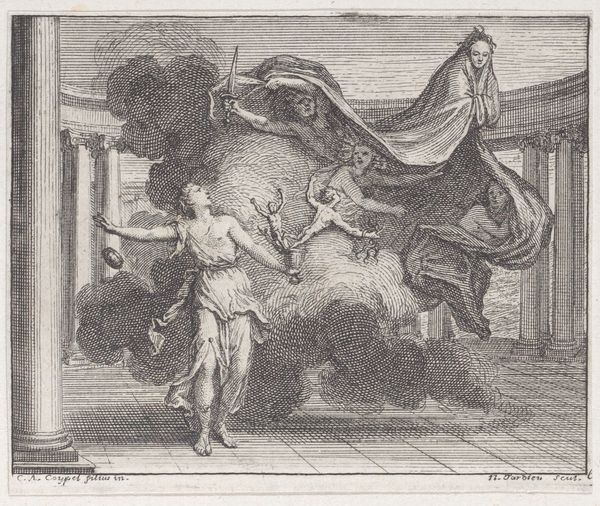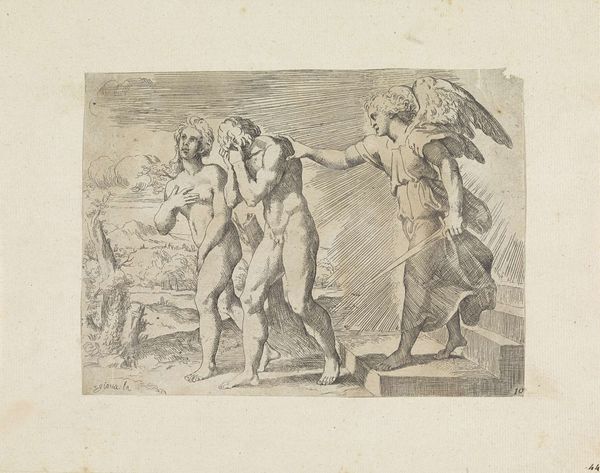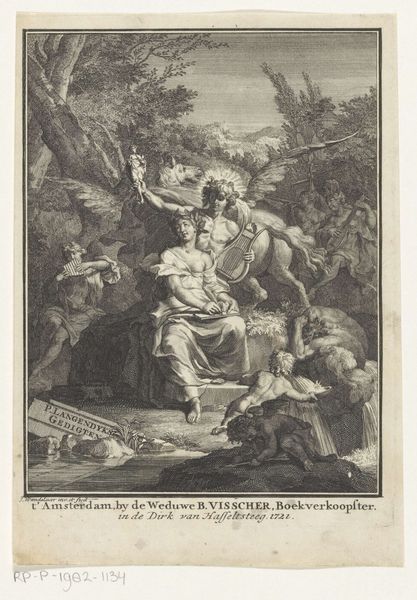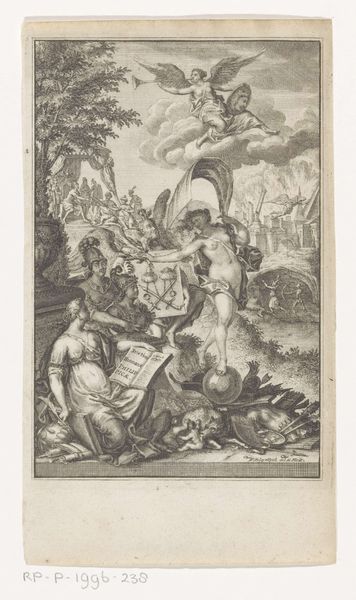
#
pencil drawn
#
light pencil work
#
pencil sketch
#
sketch book
#
personal sketchbook
#
idea generation sketch
#
sketchbook drawing
#
pencil work
#
storyboard and sketchbook work
#
sketchbook art
Dimensions: height 191 mm, width 155 mm
Copyright: Rijks Museum: Open Domain
Editor: Here we have “Virtue Drives Out Vices,” a sketch likely created between 1679 and 1702 by an anonymous artist, now housed in the Rijksmuseum. It’s a pencil drawing with incredibly light lines, giving it an almost ethereal feel. What do you see in this piece that speaks to you? Curator: Well, I am immediately drawn to the production itself. This isn’t just a finalized piece meant for display, it's a sketch! Look closely at the ways the artist uses pencil. Light and easily reproducible, pencil allows for revisions, iterations – this speaks to the artist’s process, the very labour of conceptualizing. It makes one consider the economics of art production, the ready availability of pencil as a medium and its implications for artistic experimentation. Editor: That's fascinating! I hadn't considered the socio-economic aspect of using readily available materials like pencil. Curator: Exactly! Think of the intended consumer as well. It seems a commentary on moral themes, "virtue versus vice," visualized using easily-accessible and affordable means. Not a grand statement in marble or oil, but an everyday observation, a sketch. Editor: So, it's almost like the artist is democratizing the discussion around these high-minded concepts by using accessible materials? Curator: Precisely! And considering the mass-producible nature of sketches – possibly for prints – it could circulate and impact an audience far beyond elite circles. What does that tell us about the relationship between morality, materiality, and societal values at that time? Editor: That's a completely new perspective for me. I was so focused on the imagery itself – the figures, the allegorical scene – that I missed the implications of the artistic choices behind its creation. Curator: Focusing on the materiality and its distribution opens avenues of understanding which pure aesthetic interpretations might miss. It is a tangible link to the society and process that produced it. Editor: Thanks for pointing that out. I’ll definitely consider that next time I analyze a piece. Curator: My pleasure. It is amazing to learn by looking at art making techniques, material history and context.
Comments
No comments
Be the first to comment and join the conversation on the ultimate creative platform.
